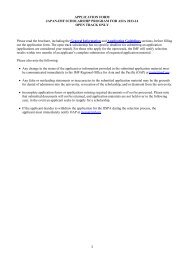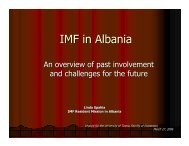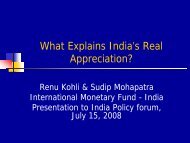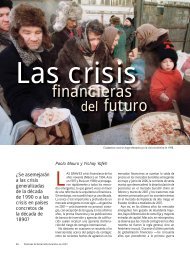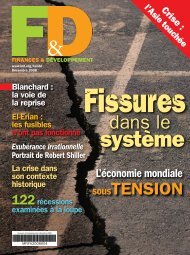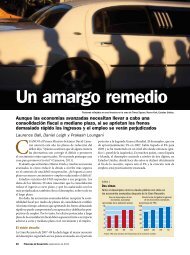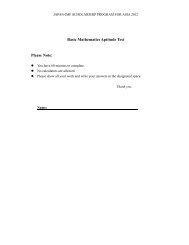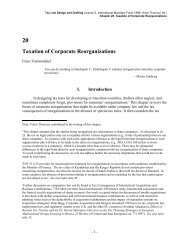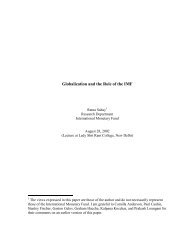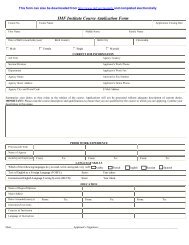Overview of Capital Account Crisis - IMF
Overview of Capital Account Crisis - IMF
Overview of Capital Account Crisis - IMF
Create successful ePaper yourself
Turn your PDF publications into a flip-book with our unique Google optimized e-Paper software.
- 17 -<br />
the counterparties are connected. 15 For example, in Turkey, the banking system open FX<br />
exposure was small when forward transactions were included, but the main<br />
counterparties in these forward transactions were other Turkish banks.<br />
• The ultimate buffer for private sector balance sheet mismatches (e.g., currency/FX) is<br />
capital. A major source <strong>of</strong> vulnerability in the East Asian crises was the very high debtequity<br />
ratios (Table 4).<br />
Table 4. Average corporate debt-to-equity ratios in selected countries<br />
(in percent)<br />
Thailand<br />
Taiwan Province<br />
<strong>of</strong> China<br />
United States Germany Malaysia Japan Korea<br />
196 90 106 144 160 194 317<br />
Source: Table 3, Annex II, <strong>of</strong> Allen et al. (2002).<br />
• Pegged exchange rate regimes, by <strong>of</strong>fering an implicit exchange rate guarantee, might<br />
encourage greater risk taking in the form <strong>of</strong> open (mismatched) FX-positions. As noted<br />
above, to the extent that emerging market countries’ ability to borrow in their own<br />
currency is limited, there must be aggregate foreign currency exposure associated with<br />
foreign liabilities (i.e., obligations to non-residents). Nevertheless, there are at least two<br />
ways in which pegged exchange rates might exacerbate foreign currency risk:<br />
• The implicit guarantee might encourage more “carry trade” (arbitrage between<br />
low-cost foreign currency borrowing and higher domestic interest rates at a<br />
given exchange rate) resulting either in greater total foreign borrowing or a<br />
bias towards shorter maturity foreign liabilities (Thailand 1997), Turkey<br />
2001/02).<br />
• Again by providing an implicit exchange rate guarantee, the pegged exchange<br />
rate might encourage more domestic “dollarization”—i.e., holding <strong>of</strong> foreign<br />
currency-denominated assets and liabilities by residents, though neither logic<br />
nor empirical evidence particularly supports this. 16<br />
15 For example, a bank may be closing its spot FX exposure through a derivative transaction<br />
with its parent conglomerate; such practices apparently occurred in Turkey prior to the 2000<br />
crisis.<br />
16 As pointed out in Lessons from the <strong>Crisis</strong> in Argentina (<strong>IMF</strong> Occasional Paper No. 236),<br />
the exchange rate guarantee implicit in a pegged regime (or currency board) cannot<br />
simultaneously explain both asset and liability dollarization. For instance, if the peg is<br />
credible, households may want to borrow in foreign currency (since FX interest rates are<br />
(continued…)





